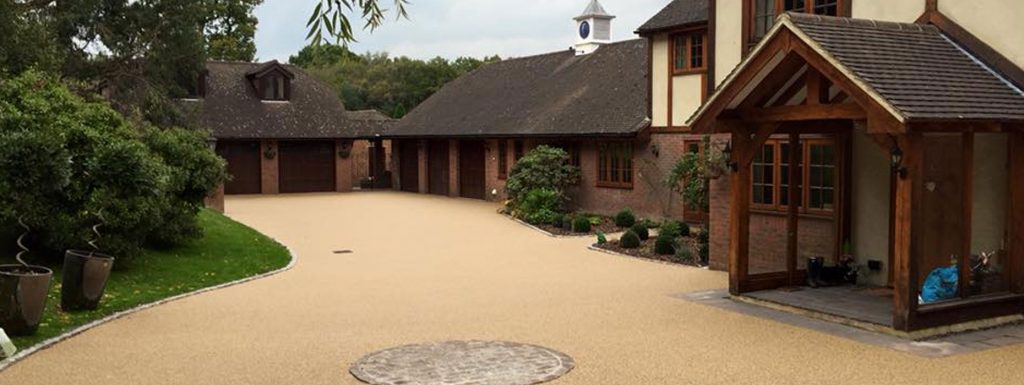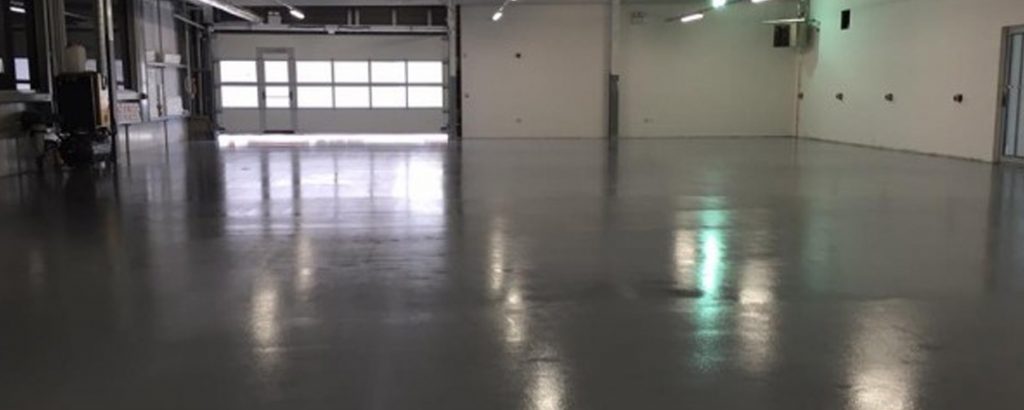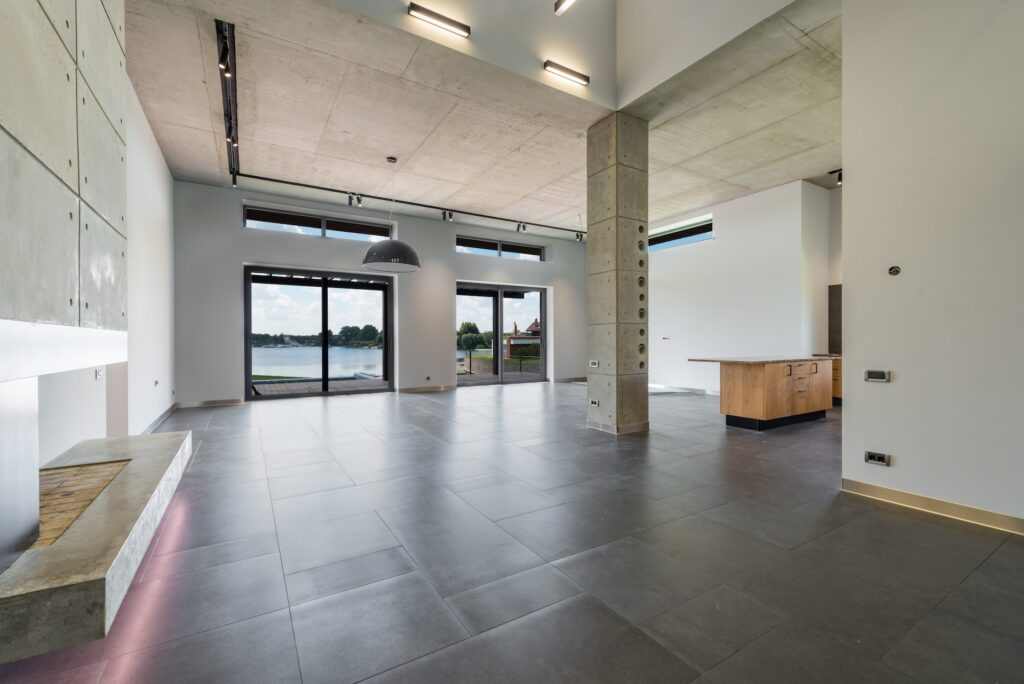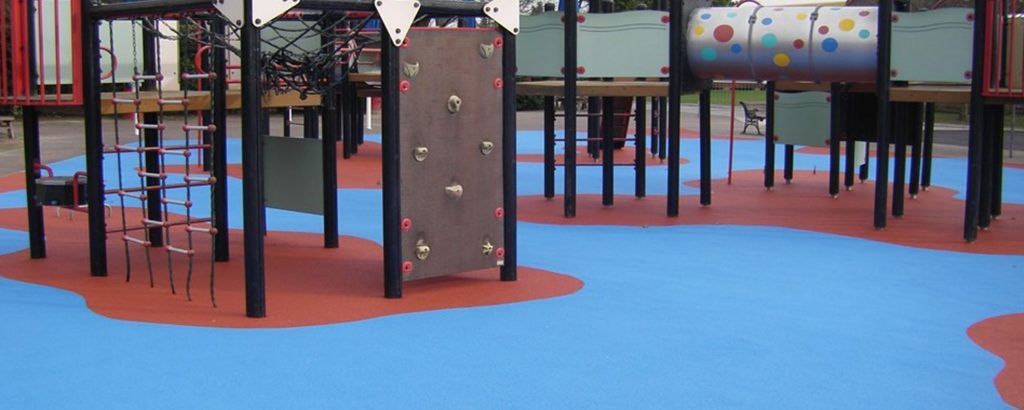When applied correctly, resin bound driveways provide a durable and attractive finish that requires very little maintenance. However, there are a number of problems that can arise during the installation of a resin-bound system (if installed incorrectly), including a poor resin-aggregate ratio, application depth, weather conditions, curing too quickly, poor installation, and lack of attention to protecting the surface.
Looking for a free resin driveway quote?
Fill out our contact form with more details about your resin driveway and we’ll get in touch with a more accurate, no-obligation resin drive cost.
Incorrect resin-aggregate ratio
Given the high cost of bound surface resin, there is a desire by both manufacturers and applicators to use as little resin as possible. The result is the common problem of not using enough resin in the mix which can cause the surface to become chewy and the stone to start breaking away. In order to avoid this problem occurring, it is crucial to get the ratio of resin to aggregate correctly. The ideal ratio of resin in the mix is usually between 6% and 8%.
Poor application depth
The depth of the surface application plays a vital role in the overall functionality of a resin bound surface. As with the volume of resin being used, application depth is also driven by cost, with most applications being laid at the minimum required depth, or sometimes even less. Applying a surface that is too shallow can cause it to break up. To prevent this from occurring, the surface should be applied at a depth above the minimum specified. The absolute minimum depth for resin driveway application should be 3 times the largest aggregate particle, for example, a 3mm by 6mm aggregate should be laid at an absolute minimum of 18mm).
The amount of primer applied to the surface needs to be accurate. The primer when applied cannot be too thick, as this will cause the polyurethane to react with the moisture resulting in a lack of adhesion between the resin and primer. To avoid this happening the surface must be protected whilst curing. The protection of the surface also prevents any imprints from being left
Rain during installation
Unexpected rain is another common problem when it comes to installing a resin bound driveway. Getting your resin or mixture wet at any stage of the installation process can have detrimental effects on the resin and, ultimately on the overall strength and appearance of the finish. When stored correctly, aggregate remains dry and fit for use, but aggregate left outside can absorb moisture, even when covered. Tiny amounts of moisture in the aggregates can minimise the performance of the finished application and commonly results in stone loss, surface whitening and blooming. Unfortunately, this problem can be difficult to avoid given the unexpected nature of the weather and the fact that it is not always immediately apparent when moisture has managed to affect the finished surface application.
Nevertheless, there are a number of steps you can take to protect your resin surface from poor weather. In advance, you should download a reliable weather app on your phone and plan ahead around the weather. However, if the weather takes an unexpected turn for the worse, there are still options to keep your driveway protected. If available, you could raise a good quality gazebo over the site, while ensuring that the mixer is also kept protected underneath the shelter. If the rain is heavy and prolonged, or the job is far from complete, you should complete the edge of the last laid mix to a neat line. This should be laid and finished at the right depth for you to return and complete the following day.
Hot weather
Another weather-related problem is heat. This is because high temperatures can cause the resin-bound surface to cure too rapidly. The required curing time of a resin-bound mixture varies depending on the ambient air temperature. In the height of summer, surfaces can cure extremely quickly, sometimes in as little as 10 minutes. To avoid encountering any issues caused by high temperatures, you must take a number of precautions in advance of your installation. You should check that the relative humidity outside is within the range of 30-85%. The surface temperature should be less than 3 degrees celsius about the dew point of the measured air temperature and the relative humidity. And finally, the operating temperature and surface temperature and/or air temperature outside should be within the range of 10-35 degrees celsius. To minimise the risk of these requirements not being met, start as early as you can before the warmest part of the day. You should also always keep resins and aggregates in the shade so that they don’t heat up and cause the temperature of the mix to increase.
Walking on the surface
Problems can occur if people or animals walk on the completed resin bound driveway before it has fully cured. This is most likely to damage the surface because it does not yet have the strength to withstand the pressure. Therefore, you should clearly mark the area with cones and warning tape to deter anyone from damaging it before it has cured. However, if these precautions fail, the damage can still be fixed. If the damaged area is accessible without walking on other areas, you should be able to re-trowel it without hassle. To do so, you should carefully chisel out the affected area. Then, mix up a small amount of stone and resin and carefully compact the new mix into the exposed area.
How to avoid these problems
Having qualified technicians who have the knowledge and skillset to assess the area, identify any potential problems, and can eradicate them before laying down the resin driveway is vital to ensure that the driveway is long-lasting. If the surfaces of the driveway are poorly installed it can lead to the surface rippling.
Depending on the use of the driveway and the size of the stones, it is recommended to have a depth of at least 16mm. Installing on a shallow surface, a depth of 10mm or less can cause the surface to break apart.
When the technicians initially take a look at the area, they will be able to judge how long the install should take, based on the size of the area. and any prep work required. Whether the entire surface can be completed in one day or not will depend on these factors. If it is a task that will take longer than one-day then, this is something to take into consideration as the technicians will need to be available on consecutive days to ensure full completion as quickly and as professionally as possible.
Once the resin driveway has been installed, any issues that may arise usually occur in the following days from completion. Once a few days have passed, there are very few problems that could happen, except possible cracking on the surface. Assessment continuously and thoroughly at all stages will reduce the chance that cracking will appear later on.





